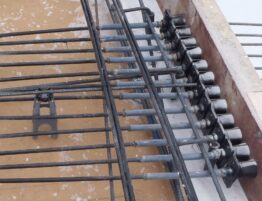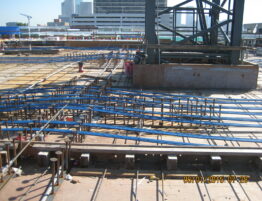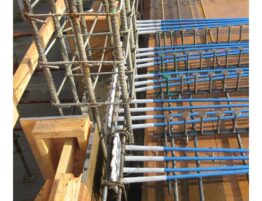
Bands and Uniforms – Types of Post-Tension Tendons
In previous articles, I’ve discussed that engineers typically designate tendons as either a concentrated, tightly-spaced group, or as an evenly-spaced force over a large area. These directions are generally orthogonal to each other. However, it’s not immediately obvious what drives this decision.
When post-tensioning was a new construction technique, tendons were always distributed across the slab in both directions. This translated very well to the techniques that are used to design mildly-reinforced slabs, where the lines between the columns (the “column strips”) are heavily-reinforced and the spaces between (the “middle strips”) are designed to span between them. Each bay looked like a bowl, with a high “rim” with columns at the corners tapered to a low “dish” between them. While the design was simple enough, placement was not; careful coordination of which tendons placed first from the center to the outside in both directions was absolutely required. This system is now called a “basket-weave” because of the intricate placement and the resulting over-and-under pattern in the tendons.
The modern system – which uses concentrated tendons in one direction and distributed tendons in the other – was developed to simplify the placing process. Rather than carefully weaving tendons in two directions, placers now locate a handful of distributed bundles, then place all the concentrated tendons, and finish by placing the remainder of the distributed tendons.
The common terminology for a modern flat post-tension slab is a “banded” slab, because the concentrated tendons are placed in bands along the column strips, and no tendons in the middle strips. In the other direction, the distributed tendons are generally referred to as “uniforms” since they’re uniformly spaced across the slab.





